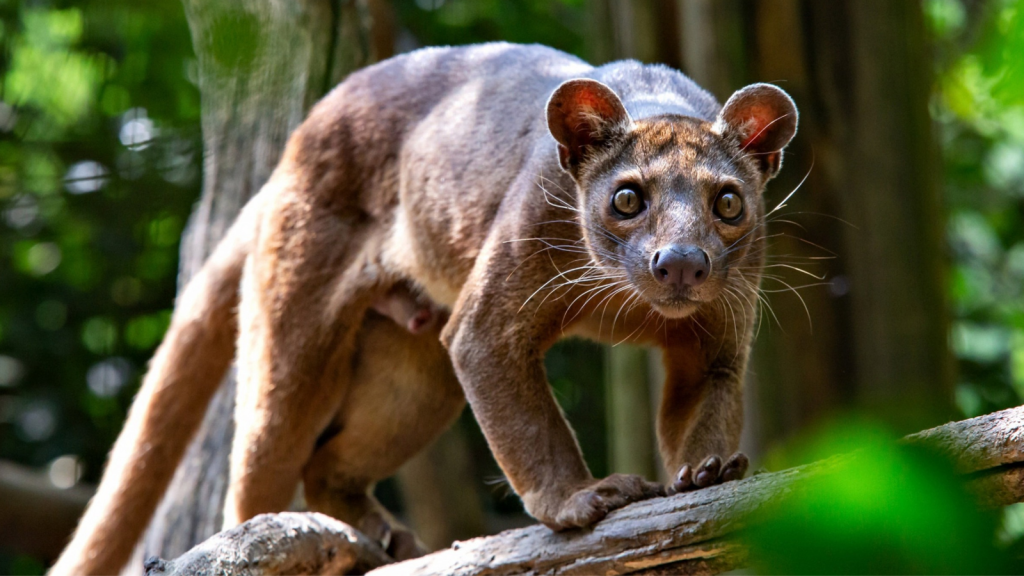Hidden in the lush forests of Madagascar, the fossa is a mysterious creature that often goes unnoticed. This sleek, cat-like animal is a master of stealth and agility, making it one of the island’s top predators. Despite its importance in Madagascar’s ecosystem, many people are unfamiliar with the fossa. It’s a fascinating animal with unique traits and behaviours that set it apart from other carnivores. Let’s explore some surprising facts about this enigmatic hunter that might just change the way you see Madagascar’s wildlife.
They’re Not Actually Cats
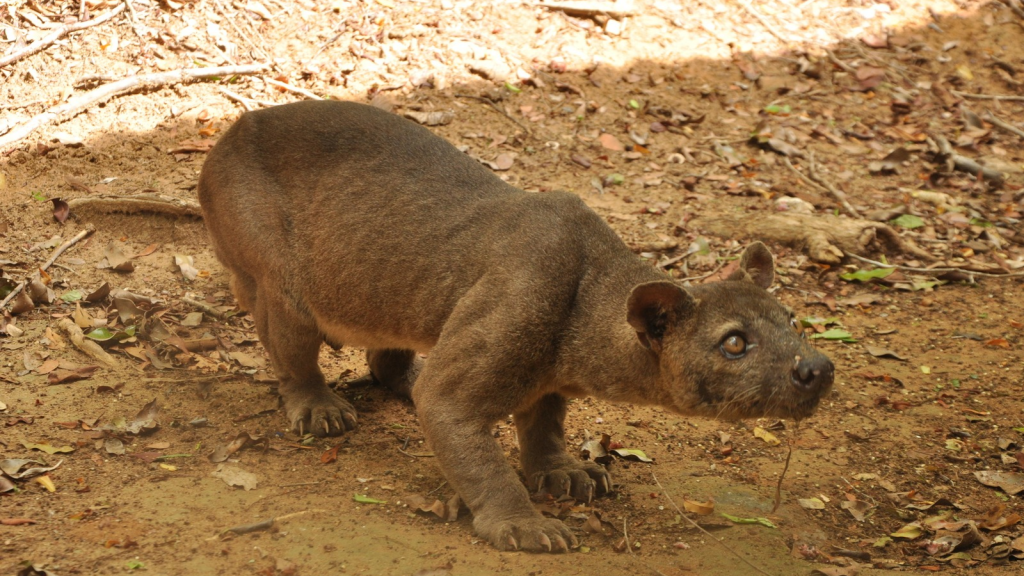
Fossa might look like cats, but they’re more closely related to mongooses. They belong to a family called Eupleridae, which is unique to Madagascar. Their cat-like appearance is a result of convergent evolution, where unrelated species develop similar traits. Interestingly, the fossa’s scientific name, Cryptoprocta ferox, means “hidden anus fierce” in Latin, referring to a unique feature of their anatomy.
Fossa Can Climb Headfirst Down Trees
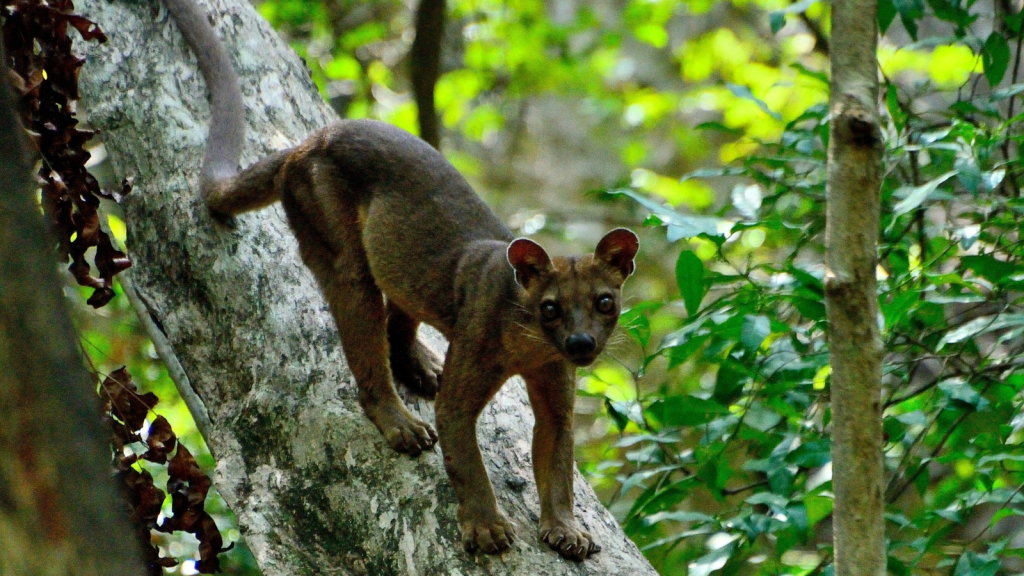
These nimble hunters have an incredible ability to climb up and down trees headfirst. Their flexible ankles allow them to rotate their feet backwards, giving them a firm grip as they descend. This skill makes them formidable hunters in the treetops. The fossa’s sharp, retractable claws and muscular body also contribute to their exceptional climbing abilities.
They Have Retractable Claws
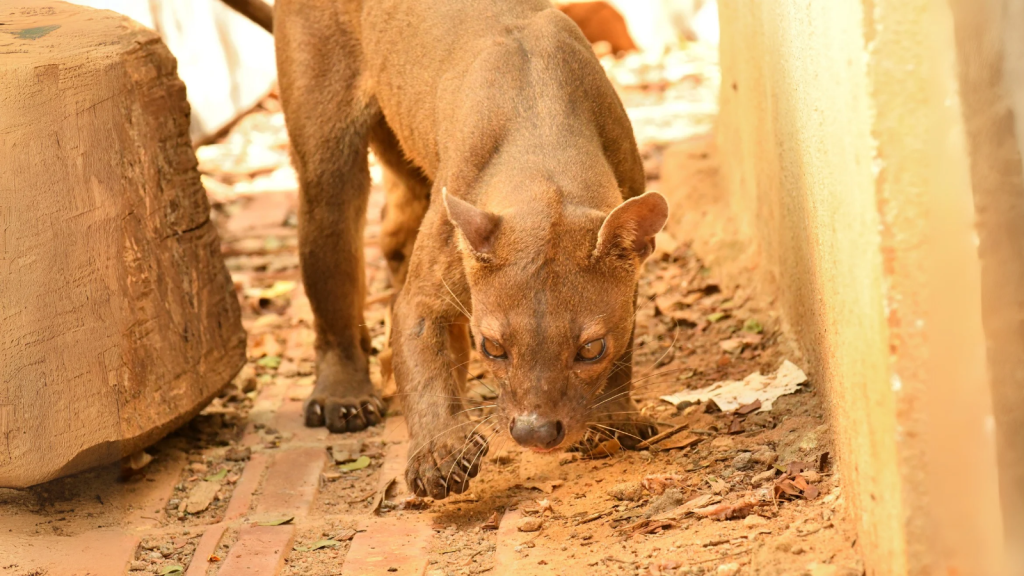
Like cats, fossa have retractable claws that help them climb and catch prey. These sharp tools can be tucked away when not in use, keeping them sharp and ready for action. This feature sets them apart from their mongoose relatives. The fossa’s claws are also slightly curved, providing extra grip when climbing or holding onto prey.
Fossa Are Madagascar’s Largest Native Carnivore
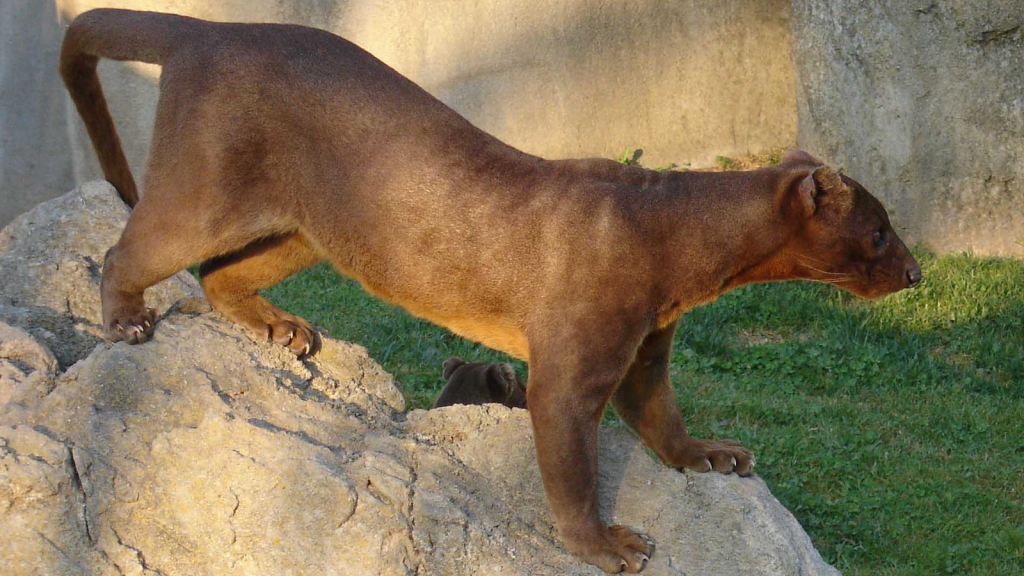
Despite being relatively unknown, fossa are the biggest meat-eaters native to Madagascar. They can grow up to 1.5 metres long, including their long tails. Their size and hunting prowess make them the apex predators of the island’s forests. Adult fossa can weigh up to 12 kilograms, making them a formidable presence in Madagascar’s ecosystems.
They Have Unusual Mating Habits
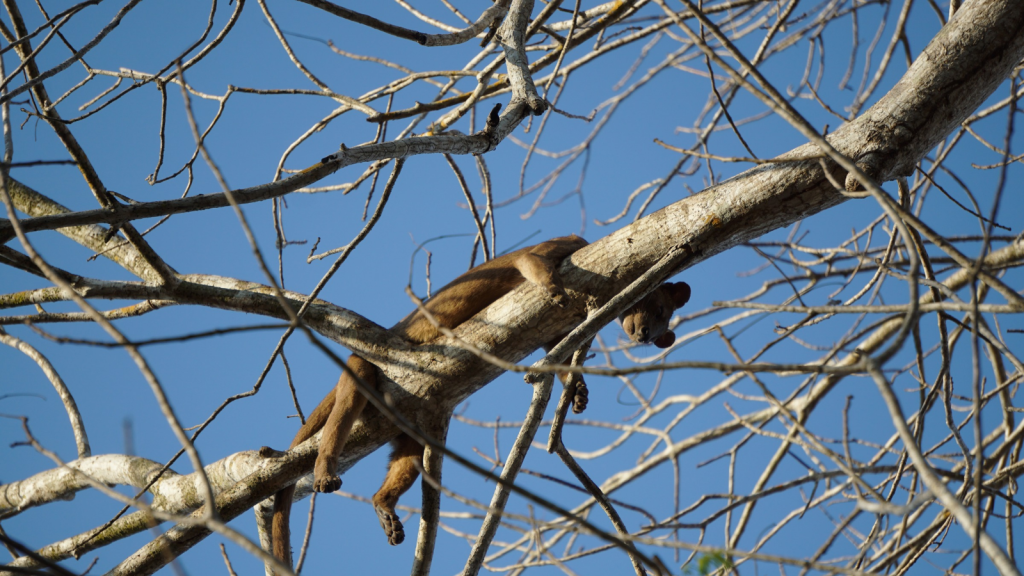
Fossa have a unique mating system. Females choose a specific tree for mating and stay there for up to a week, mating with multiple males. This behaviour is rare among mammals and helps maintain genetic diversity in the population. During mating season, female fossa can mate with up to eight different males in a single day.
Fossa Are Mainly Active at Night
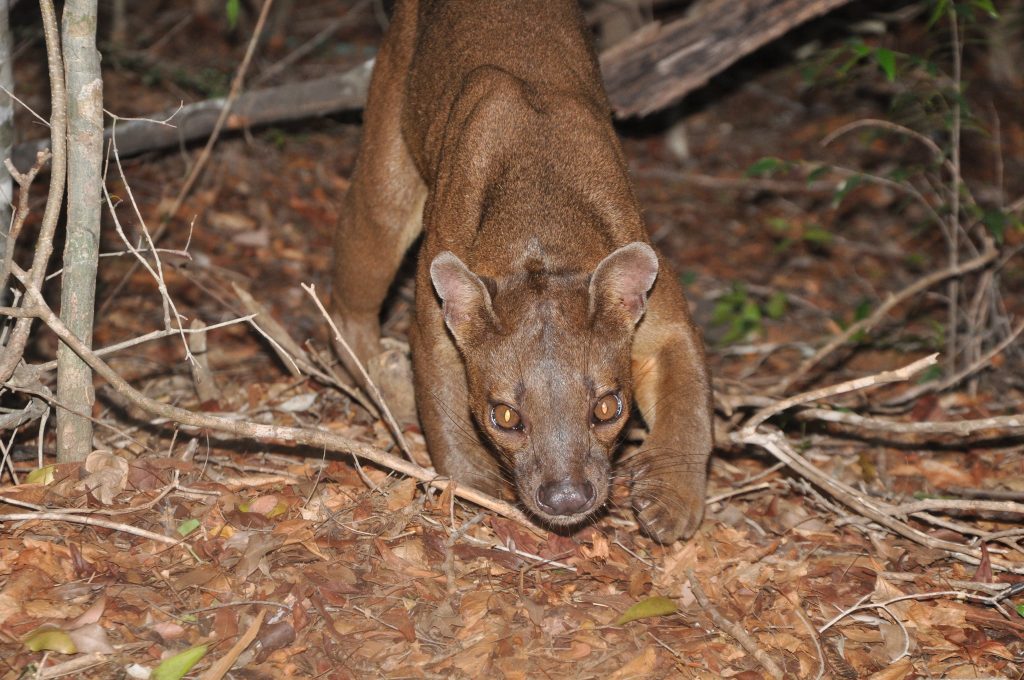
These elusive animals are nocturnal, doing most of their hunting after dark. Their large eyes and keen senses help them navigate the forest and locate prey in low light conditions. This nighttime activity makes them even more mysterious to humans. Fossa have excellent night vision, with eyes that reflect light like a cat’s, giving them an eerie glow in the darkness.
They Have an Incredibly Diverse Diet
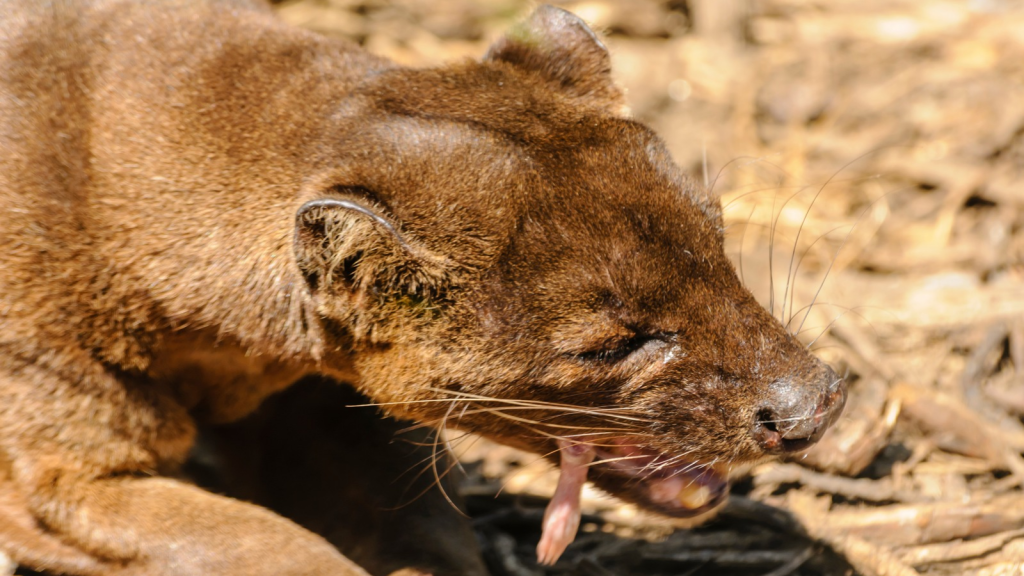
Fossa are opportunistic eaters, feasting on a wide range of animals. Their menu includes lemurs, rodents, birds, reptiles, and even insects. This varied diet helps them survive in different habitats and adapt to changes in prey availability. They’ve been known to eat up to 50 different species, making them true generalist predators.
Fossa Can Make a Variety of Sounds

Despite their cat-like appearance, fossa don’t meow. Instead, they produce a range of vocalisations including purrs, yaps, and a distinctive scream during mating season. These sounds help them communicate in the dense forest. They also use scent marking to communicate, with both males and females possessing scent glands.
They’re Excellent Swimmers
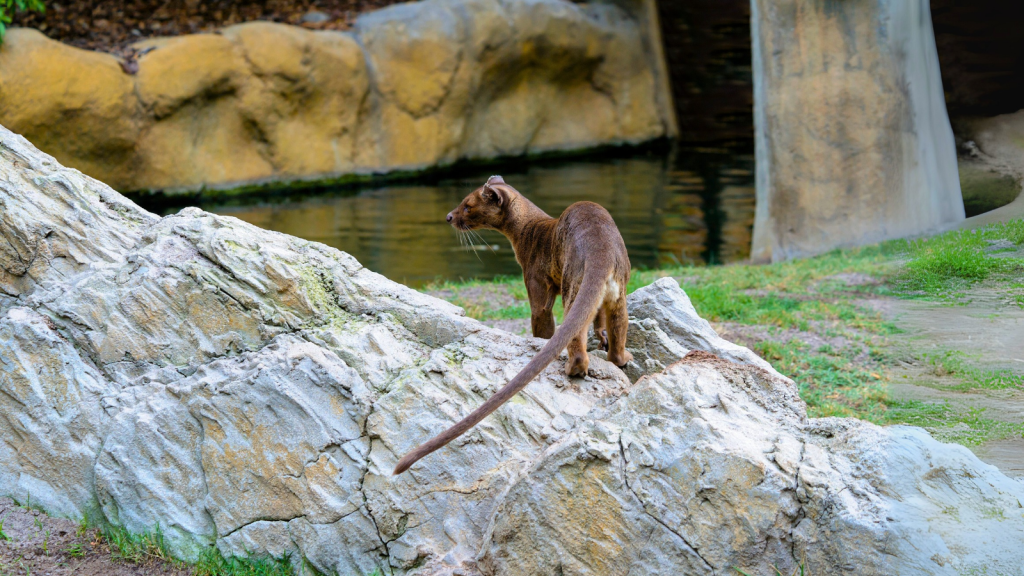
Fossa are surprisingly good swimmers, although they’re not often seen in water. This ability allows them to cross rivers and streams in search of food or new territory. It’s another skill that makes them versatile predators. Their waterproof fur helps keep them dry and warm even after a swim.
Fossa Have a Secret Weapon: A Long Tongue
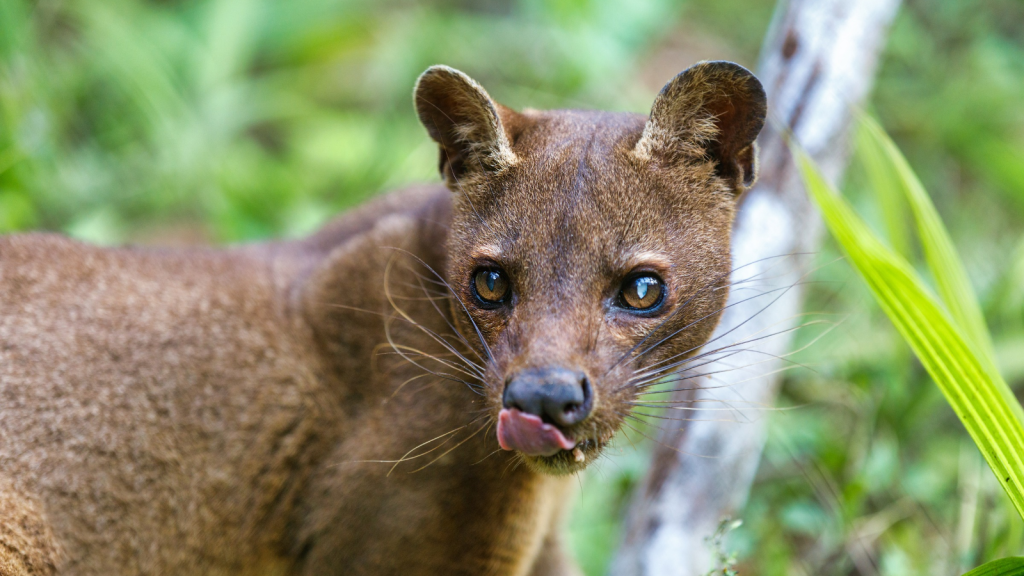
These animals have unusually long tongues for their size. This feature helps them reach into crevices and holes to catch small prey like rodents. It’s also useful for grooming their thick fur. The fossa’s tongue can grow up to 6.5 cm long, which is remarkably long compared to their body size.
They’re Solitary Animals
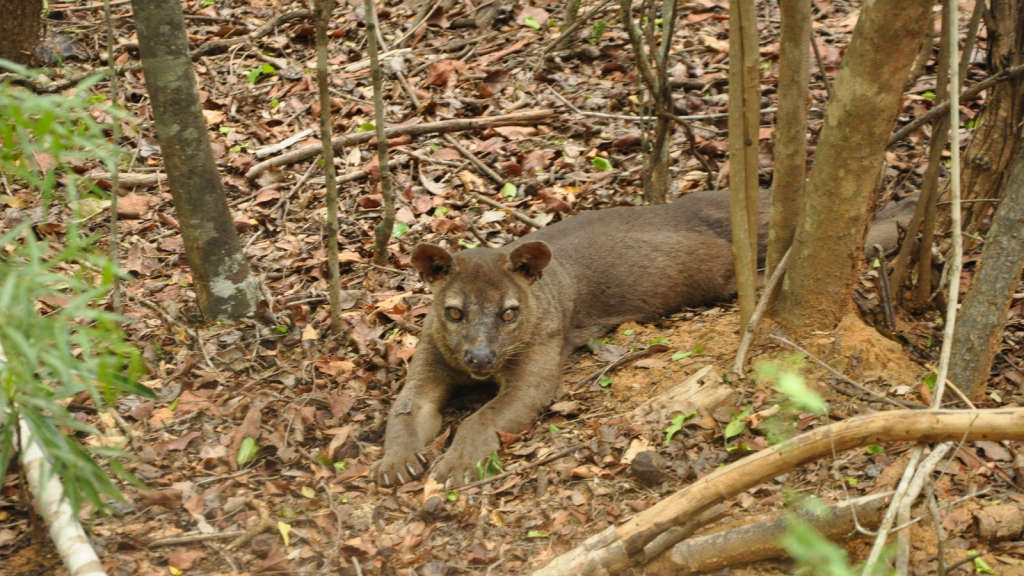
Unlike many carnivores, fossa prefer to live and hunt alone. They only come together during mating season. This solitary lifestyle helps them avoid competition for food and territory in the forest. Each fossa typically has a home range of about 26 square kilometres, which they fiercely defend from other fossa.
Fossa Tails Are Almost as Long as Their Bodies
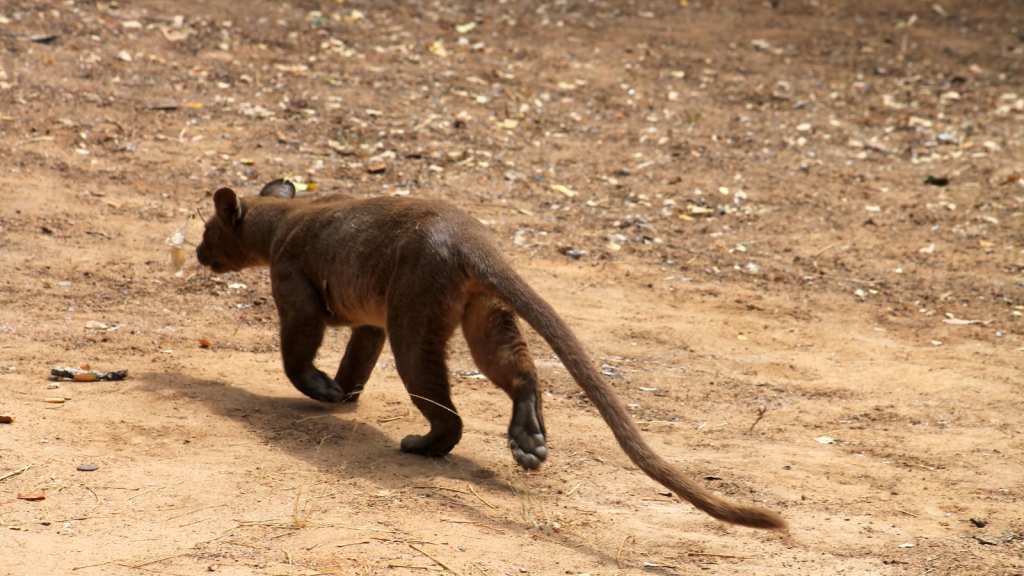
The fossa’s long, thick tail makes up nearly half its total length. This tail helps them balance as they move through the trees and can even be used to communicate with other fossa. The tail is also used as a fat storage organ, helping the fossa survive during times when food is scarce.
They Face Serious Threats
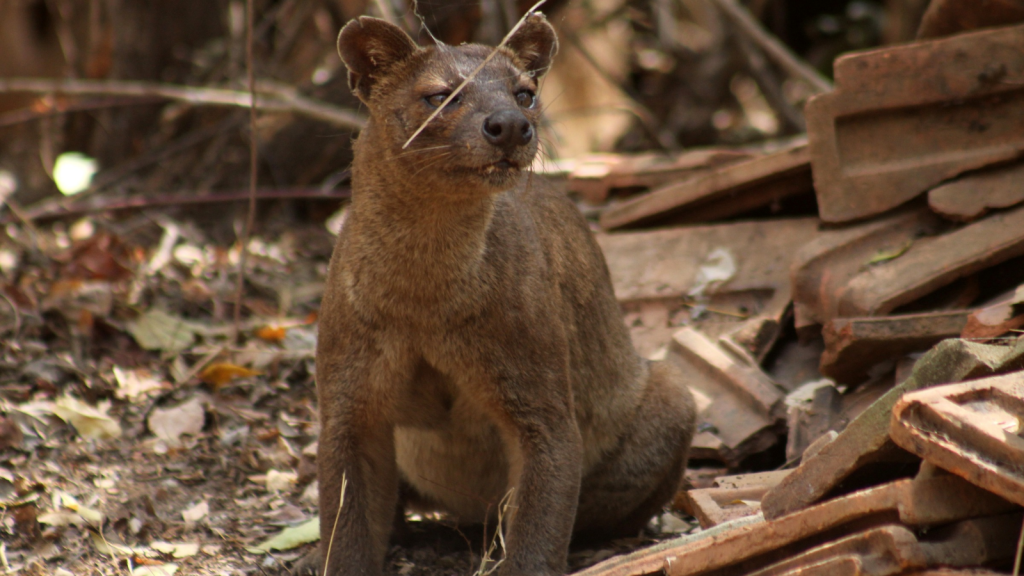
Sadly, fossa are vulnerable to extinction. Habitat loss due to deforestation is their biggest threat. They’re also sometimes hunted by locals who see them as a threat to livestock. Conservation efforts are crucial for their survival. It’s estimated that there are fewer than 2,500 mature fossa left in the wild, making them a high priority for conservation efforts.
Fossa Have Unusual Feet

These animals have unique feet that are both catlike and bearlike. Their soles are bare, giving them extra grip on tree branches. This adaptation makes them incredibly agile in the forest canopy. The fossa’s feet also have semi-retractable claws, providing a perfect balance between grip and protection.
They Play a Crucial Role in Lemur Evolution
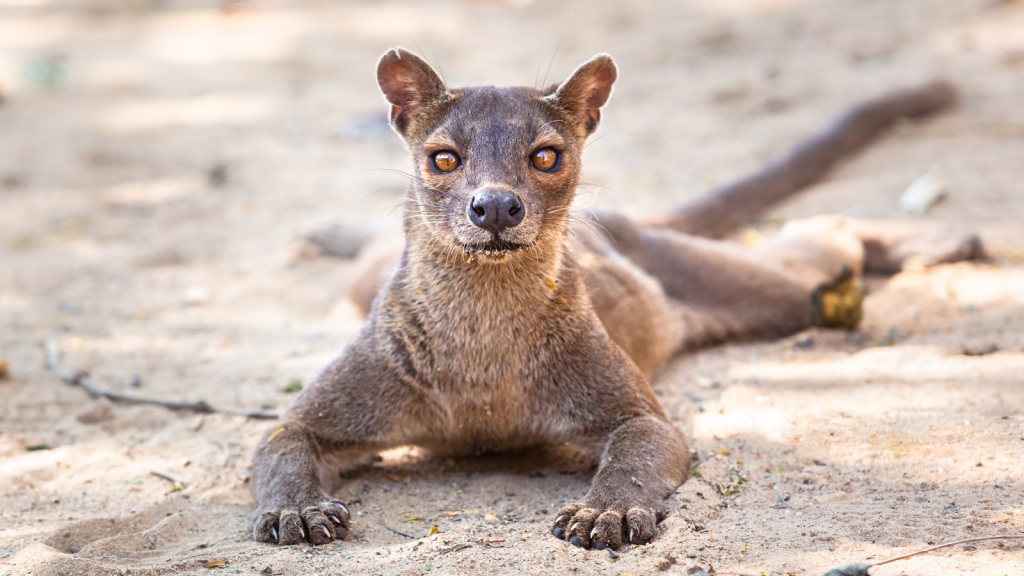
As the main predators of lemurs, fossa have influenced lemur evolution. Some scientists believe that lemurs’ social behaviours and activity patterns have developed partly in response to fossa predation. This predator-prey relationship has been ongoing for millions of years, shaping the unique wildlife of Madagascar.
Becky is a fervent wildlife enthusiast and pet care expert with a diploma in canine nutrition. Her love for animals stretches beyond the domestic, embracing the wild tapestry of global fauna. With over a decade of experience in animal welfare, Becky lends her expertise to OutlandishOwl through insightful articles, captivating wildlife information, and invaluable guidance on pet nutrition. Her work embodies a deep commitment to understanding the intricate lives of animals and a passion for educating others on sustaining natural habitats. Becky's hands-on conservation efforts and her knack for translating complex dietary science into practical pet feeding tips make her an indispensable voice for creatures great and small.

